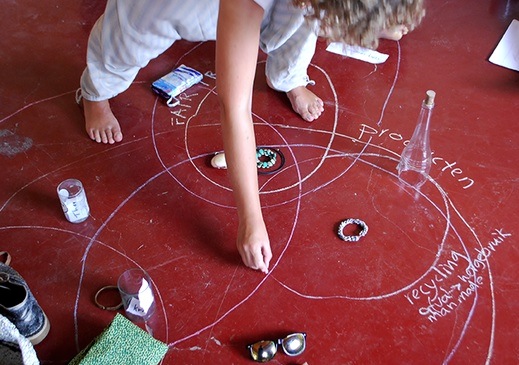Australian’s strong appetite for the arts will benefit from a $235 million cultural policy that ties Australian creativity to job creation. The policy, ‘Creative Australia’ will increase its funding for organisations and artists, employing more than 531,000 people in cultural work.
But while this policy is welcome above all for its support of young artists, a significant question remains unanswered: how can the role of arts and creativity be used to solve problems that face the world’s poor?
The design profession has a key role in making products more desirable to somehow continue the link from production to consumption for economic growth. But not much has been done about rethinking the way we design and setting out the purpose of design outside an industrial context.
At a public lecture on Thursday, February 21 at UNSW’s COFA, Jeroen Spoelstra and Boukje Vastbinder, two product designers and social entrepreneurs from the Netherlands, spoke of their global research project “Am I a Designer’, created with the aim of unearthing the real meaning and impact of design and entrepreneurship on poverty reduction.
Despite their professional success these designers decided to stop producing futile products like ‘dog tents’ and instead try to achieve a different kind of impact by designing better and more durable products for more disadvantaged communities.
Throughout the lecture Jaroen and Bojke raised challenging questions for the audience, mainly design students and art college representatives. The question that ignited their whole project and drew most attention from the audience was to address the current reality that 99 per cent of products bought by Western consumers (and designed by product designers) are trash within only six months.
This raises such questions as “what is the real meaning and value of design and what are we using these entrepreneurial skills for?” and “are designers and entrepreneurs really working towards meaningful change or are they actually part of the problem?”
Their insightful presentation is worth highlighting especially in Australia’s current context where funding will support youth participation in the arts but where there has been little or no discussion about designers being prepared to move away from products designed primarily for consumption to more sustainable approaches.
Jaroen and Bojke shared with the audience some of the many projects they have collaborated with in Indonesia, Peru, Australia, the United States, Zanzibar, Tanzania and Kenya.
Working on these projects over five months they discovered that solutions which meet the needs of developing communities do not usually come from the West with its abundance of capital and opportunities; often solutions are found within local businesses, using local materials, local practices and ancestral practices that are more sustainable and indicative of the good that a designer can accomplish.
“Am I a Designer’ is worth checking out and becoming involved with because boosting arts funding is a step towards embracing talent but the real change is using arts and creativity to come up with real and sustainable approaches that deviate from design as the handmaiden to industry.


